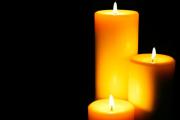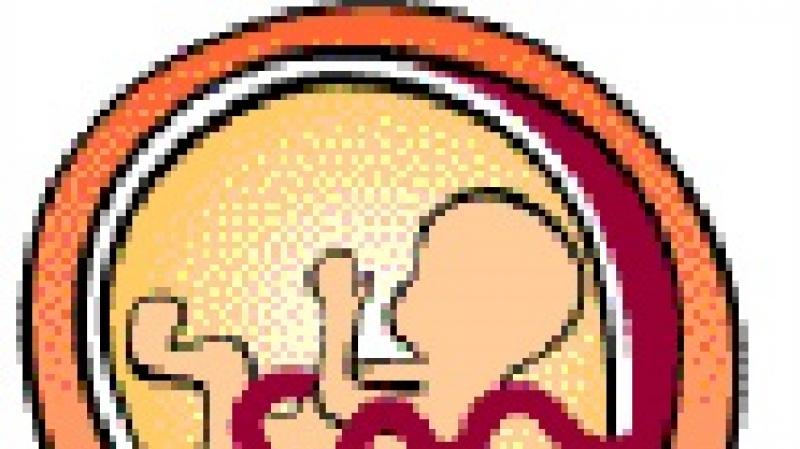The main holiday in this temple. Patronal holiday
The most solemn and joyful day marked in the Calendar of the Russian Orthodox Church is Easter. In addition, the annual cycle includes many various holidays, divided into groups according to their meaning and characteristics. These are days celebrated by all Orthodox Russians. However, there are also holidays on the occasion of which celebrations are held only in individual churches. They are called throne ones. These are the ones that will be discussed in this article.
Patronal holiday - what does it mean?
In every Orthodox church there is a throne (literally a special table) located inside the altar and consecrated in honor of some saint or important event in sacred history. On the days of their commemoration, temple, or, in other words, patronal holidays are held. In the Church, this custom was established soon after the baptism of Rus', and has been strictly observed for many centuries. According to tradition, both members of the given parish and guests who come to share the common joy take part in the celebrations.
Since many churches have two or three chapels (and sometimes more), then, accordingly, they have several altars with thrones. In these cases, patronal feasts are held in them more than once a year, according to the number of available thrones, consecrated in honor of various historical events and saints. It is typical that in large settlements where there are several churches, not all residents participate in the celebrations at the same time, but only members of one or several “birthday parishes.”
Prayer services in parishioners' homes
In Rus', it has long been the custom that, along with Easter and other solemn days of the church calendar, the main events of the year were patronal holidays. What this meant for the Orthodox people can be learned from the descriptions of the celebrations left by eyewitnesses and participants. IN rural areas It was customary after the end of the liturgy to go around all the villages included in a given parish in a procession of the cross. This was done with extraordinary solemnity, with icons and banners, which were carried especially dear people, called “God-bearers.”

In some cases, especially if the parish was small, the rector of the church, together with his small clergy, visited the houses of parishioners a few days before the start of the celebrations and served prayer services in front of the family icons of the temple saints. At the same time, the priest sprinkled holy water on the home of his parishioner, his outbuildings, a well, cattle and all the land belonging to him.
Since it was believed that after such a sprinkling, God’s blessing would certainly descend on the house and everyone who lived in it, on the eve of the temple holiday there were many who wanted to get the priest and those who accompanied him to come to them. It was customary to place a table covered with a white tablecloth at the gate in advance, on which they placed a ladle with water prepared for blessing. Such visits, accompanied by prayers, were a joy not only for the owners of the houses, but also for the priests themselves, since they were presented with money and food for their efforts. When the priest, having completed all the required rituals, left the courtyard, the family began the festive meal.
Walk like that!
An obligatory element of Orthodox patronal holidays was the reception and refreshment of guests, among whom could be not only relatives, but also neighbors, and sometimes completely strangers, who happened to be at the gate. The celebrations were organized on a grand scale, which is generally typical for Russian people. No wonder they say: “Walk like that!”
It is known that until the end of the 19th century in Russia it was accepted during whole week celebrate each of the winter patronal holidays. What this means is not difficult to guess. The celebrations, which began in the temple under the strict singing of the church choir, soon moved to homes, where, over a meal accompanied by copious libations, they acquired more than free features. The next day everything was repeated again, and this continued until the end of the week.

Difference between winter and summer festivals
Only with the advent of the 20th century the number of holidays was reduced to two or three. The only exception was the Nizhny Novgorod district, where until the revolution the custom of starting celebrations on the day that fell according to the calendar was maintained. this holiday, and continue until the end of the week, no matter how many days it takes.
But such fun even in old times It was allowed only in winter, when the peasants took a break from field work. During the time of need, everything was different. Celebrations on the occasion of patronal feasts, as a rule, were limited to one day, and in those cases when circumstances forced the peasants to hurry, they took place in a shortened version - from lunch to evening or from sunset to morning. Nothing can be done - the Lord sent down our daily bread, but we had to grow it ourselves.
Features of city celebrations
In cities, patronal feasts were celebrated with the same solemnity. Processions of the cross first went around the building of their own church, then the territory of the parish and, finally, went to their neighbors, if they also had a throne on that day, consecrated in honor of a given saint or event. Processions from neighboring parishes often moved towards the “birthday boy”, bringing congratulations on the patronal feast day.

Preparations were made for these celebrations several days before their onset. They had to sweep the yards and streets. They put things in order in the churches, cleaned the icon frames, and, if possible, tried to renew the carvings and gilding on church utensils. In churches in Moscow and other large cities, it was customary to illuminate bell towers and front facades with bowls with torches mounted on them.
Multi-day fun
All the above-mentioned affairs were handled by men, while women also had a lot of worries on the eve of the patronal feast. Duties included cleaning the house, baking bread and pies, and preparing all kinds of treats. Beer was usually brewed in every house, and wine and vodka were purchased, and in very fair quantities, since custom these days required “bringing a glass” to everyone who came into the hut, be it a passer-by, a fellow countryman, or just a beggar. Everyone had to be fed and watered.
This detail is also curious: if the patronal feast of the temple was celebrated by residents of several villages at once, then the tables, pooled together, were set in turn in each of them, which is why the celebrations could drag on for two weeks. This is known from chronicles compiled in the second half of the 19th century by residents of the Novgorod, Kostroma and Vologda provinces. The same picture was observed in Siberia. Having started a general celebration in one of the villages, the parishioners, after two to three days of feasting, moved to another, and then to a third, etc.

Annoying misunderstandings
Unfortunately, following this custom did not always end well. What does it mean? Patronal feasts, especially those held in villages, were often accompanied by extremely immoderate libations and turned from religious celebrations into banal drinking sessions. This caused sharp criticism from the church authorities, who made efforts to admonish their flock, but were powerless in the face of established customs.
Holiday trade
In many regions of Russia there was a tradition of organizing fairs and bazaars to coincide with patronal feasts. They were usually visited after the church service and the subsequent meal. This was especially common in the Volga province and Siberia. Descriptions of such holiday fairs can be found in the works of A. M. Gorky, N. S. Leskov, D. N. Mamin-Sibiryak and many other classics of Russian literature.
Since Rus' began to solemnly celebrate calendar days commemoration of saints, as well as the most important events of sacred and church history, a certain culture of conducting holiday celebrations. From year to year it was customary to arrange them in the same places, which were usually church squares with adjacent streets, outskirts, country groves, meadows, high river banks, etc.

A large crowd of festively inclined people always opened up a wide field of activity for various kinds small traders whose goods were in constant demand. Cheap gingerbread cookies, sweets, seeds, nuts and all kinds of kvass were in great demand. The festivities, in which mainly unmarried youth took part, often dragged on until the morning and gave rise to the very same complaints from the clergy mentioned above.
Revival of tradition
Nowadays, when after many decades of atheistic persecution the Church has regained its former positions, patronal feasts have not lost their significance, but the form of their implementation has undergone some changes. The entire cycle of festive services established by the church canon remained the same. They are also accompanied by religious processions, although not so long.
Nowadays, their route usually runs around the temple and rarely goes beyond the church fence. Mutual congratulations remain the same, but mass celebrations and associated feasts are a thing of the past. Usually the matter is limited to a modest and decent meal in all respects, arranged by the rector for the clergy and the most active members of the parish. A new trend has been the holding of various events on patronal feast days, including the demonstration of Orthodox-themed films, performances by folk groups and amateur performances. This is especially widely practiced in Moscow churches.

Patronal holidays among Western Christians
In conclusion, we note that similar holidays exist among Christians in Western Europe. The most typical example is the German “Kirmos”, also held on the days of commemoration of one of the saints. In terms of its form, it is very close to its Russian analogue. The service also includes a religious procession, the route of which runs through the surrounding villages. This is followed by lunch and dancing. Usually such holidays last from 2 to 4 days, accompanied by all sorts of amusing competitions - running in sacks, dancing with flags, hand-to-hand fights between guys, etc. Their final stage is, as a rule, a masquerade.
A similar example can be seen in the Czech Republic, where patronal feasts are called “Posviceni”, which translated means “consecration”. They are not carried out all year round, like ours, but from the end of summer until the pre-Christmas period, called Advent. In general, the course of the celebrations is close to ours, but it distinctive feature It is a custom to visit cemeteries and perform a special service for the dead there.
Each of us has probably heard the phrase “throne holiday” at least once in our lives. The word “holiday” is clear to us. But the word “thronely” is somehow not very good. What does it mean? Let's try to figure it out.
Patronal holiday - what does it mean?
All Orthodox churches were built either in memory of some significant evangelical event, or in honor of a revered saint. For example, the Transfiguration Church was built in memory of the Transfiguration of the Lord, St. Nicholas Church - in honor of St. Nicholas the Wonderworker.

Temple structure
But where did the word “thronely” come from and what does it mean? In order to understand this, you need to know the structure of the temple. Any Orthodox church is divided into three parts:
- Altar part.
- The middle part of the temple.
- The narthex
The altar is the main part of the temple. Only clergy (bishop, priest and deacon) and some clergy (sacristans) can enter it. The altar contains the main Orthodox attribute - St. The throne, that is, the holy place where Christ Himself sits. On St. The great sacrament of the Eucharist is performed at the Altar, and the Holy Tabernacle contains St. Gifts of Christ.
It is known that St. The throne is the main item of church utensils. That is why the main temple holiday is called the patronal holiday. So, let's continue to understand further.
Patronal holiday- what does it mean? You can find out about this by looking at the temple icon. Usually it is located in the lower right corner of the iconostasis. Most often it can be seen on the choir, where singers sing. Sometimes a temple icon can be in an ark - in a beautiful large frame with a stand. It is known that patronal holidays in August can be the day of Transfiguration or Assumption.
Customs and traditions on temple day

Temple or patronal day is a special day of the year when the entire church parish and parishioners of other churches gather for a festive liturgy for joint prayer. A particularly revered event or a particularly revered saint is commemorated in the temple. For example, this could be the day of remembrance of St. Panteleimon. Therefore, they prepare for it very carefully and in advance: they clean the church and the surrounding area. Sometimes the ruling bishop attends the patronal feast.

After the liturgy, a prayer service is held with a procession of the cross. All clergy, clergy, parishioners and guests walk around the temple three times with banners and icons. In this case, the priest usually sprinkles the believers with holy water. At the end of the service, “many years” is sung, i.e. a wish to all those present for long years life with God. According to the good old Russian custom, after prayers, all those present are invited to a meal (treat).

Classification of Orthodox holidays
In addition to the temple holiday of St. The Church prescribes that services should be held on major, middle and minor holidays. There is not a single day in the church calendar when some event or saint is not remembered. Christian holidays reflected in the month's book can be divided into groups according to the following criteria:
- The importance of events (great, medium, small).
- Celebration time (movable and stationary).
- Place (common, temple).
- Type (Lord's, Mother of God, Saints).
Let's talk more about each group.

Classification by importance
By importance Christian holidays are divided into:
- The Great Ones (Easter, the Twelves and the Great Ones).
- Average.
- Small ones.
Great or great holidays.
Easter or light Christ's Resurrection- this is the most important Christian event, when Christ, by His death, defeated spiritual death, opened the gates of heaven, and gave us all the opportunity to be participants in eternal bliss.

Twelves (from the number 12) are 12 big ones Orthodox holidays in the Christian calendar , which reflect the most important events from the life of Christ or the Mother of God.
- Christmas Holy Mother of God . On this holy day, Mary was born, who was destined from above to become the Mother of God.
- Exaltation of the Cross. Elevation or raising of St. Helena and St. Constantine of the Cross of the Lord for the worship and healing of those who believe in Him. They found the Holy Cross several centuries after Christ's Resurrection.
- Presentation of the Blessed Virgin Mary into the Temple. I remember the day the Righteous Joachim and Anna dedicated their three-year-old daughter Mary to God. The Virgin Mary lived at the temple until she was 12 years old.
- Nativity. The birth of the Infant Christ in Bethlehem is remembered, as well as the appearance of a new star in the sky, the worship of the shepherds and wise men.
- Baptism or Epiphany. We solemnly remember the acceptance of holy baptism by the Lord at the hands of John the Baptist. The event was so great that the appearance of St. Trinity.
- Presentation of the Lord. Simeon the God-Receiver waited for the Savior to come into the world and met Him in the temple.
- Annunciation of the Blessed Virgin Mary. On this day, through the Archangel Gabriel, God informed the Virgin Mary of her great mission - to become the Mother of God.
- Entry of the Lord into Jerusalem or Palm Sunday. It is celebrated a week before Easter and speaks of the event when Christ solemnly rode into Jerusalem on a donkey. All those gathered greeted Him with shouts of “Hosanna, blessed is he who comes in the name of the Lord,” and spread their clothes and fronds (palm branches) before Him. We don’t have palm trees, so believers bring decorated willow branches to churches. Hence the name of the holiday.
- Ascension of the Lord. On this day, the Lord ascended to heaven, but promised to send the Comforter to the disciples - the Holy Spirit. The next coming of Christ will be terrible: He will come to judge the living and the dead.
- Trinity or Pentecost. On this great day, when the Holy Spirit descended on the apostles, the birth of the Christian Church took place. From that moment on, Christ's disciples began to fearlessly preach about Christ throughout the world.
- Transfiguration. On the city of Tabor, Christ showed His disciples His Divine essence. He was transformed, that is, he changed before the eyes of the amazed apostles. His clothes became snow-white, a bright light emanated from the Divine Face, and He Himself stood on a cloud and talked with the Old Testament prophets Moses and Elijah. God the Father once again confirmed the Divinity of Jesus Christ.
- Dormition of the Blessed Virgin Mary. A holiday when the blessed death or dream of the Virgin Mary is remembered. Christ Himself, together with a host of angels, took Her holy soul to the heavenly abode. Subsequently, the Lord also took away the body of the Mother of God, so there is no Her grave on earth.
The great holidays include several more important events from the life of the Lord, the Most Holy Theotokos, John the Baptist, and the apostles Peter and Paul.
Classification by time
Depending on Easter, holidays are movable and immovable, or movable and immovable.
Fixed or non-transient are holidays that are celebrated on the same day every year.
Mobile or transitory are holidays that are celebrated every year on different time and depend on the day of Easter.
Classification by location
Temple, patronal holiday - what does it mean? Church calendar especially highlights patronal or temple holidays, days of especially venerated icons of the Mother of God or saints. They are celebrated with special solemnity and pomp.
General holidays - uh these are events that are remembered by the entire Church, regardless of the country, city and size of the temple.
Classification by type
The entire annual church cycle in the Christian calendar is divided into three parts according to the following type:
- The Lord's. Dedicated the most important events from the life of Christ.
- Mother of God. They talk about important points life of the Mother of God.
- In honor of saints and ethereal forces. This group includes the holy Angels, archangels and all the heavenly hosts who stand at the Throne of God. The Holy Church also commemorates all the glorified saints who showed their lives hot love to God and an example to follow. For example, August 9 is the day of remembrance of St. Panteleimon. In this group there are the days of our heavenly patrons, whose names we bear - the days of the Angel.

Let's summarize. Patronal holiday, what does it mean? This is one of the celebrations in the annual church circle, in honor of which the temple was built or consecrated. Therefore it is also called a temple festival.
PARENTAL HOLIDAYS
The cult of local patrons and the reasons for its emergence
The cult of saints, as already mentioned, arose as a cult of local patrons, local saints and gods. Some of the local patrons eventually turned into pan-Christian or pan-church saints. However, their veneration primarily as local patrons and saints has survived to this day.
This is how it was in the West. This was the case in Rus'.
The widespread spread of the cult of saints in Rus' began during the appanage period. The process of formation of appanage principalities led to the fragmentation of the centralized state. The appanage princes tried in every possible way to increase their inheritance, not stopping at the military seizure of neighboring possessions. The conquered region had to be secured for itself. And this could best be done not by force, but by ideological, religious indoctrination of the population. In an effort to populate the lands of the appanage, the princes lured people from everywhere, and for this, religious bait was also widely used. Such bait was primarily served by the saints of the Orthodox Church, whom the princes declared patrons of their inheritance. To be more convincing, the princes tried to get some famous shrine for their inheritance, build a more majestic temple and decorate it with richer utensils, get a “miraculous” icon, or acquire the relics of some popular saint. At the same time, they did not disdain any means.
Thus, Andrei Bogolyubsky, leaving Vyshgorod for the Suzdal inheritance, took with him the “miraculous” icon of the Mother of God, and a little later, in 1169, his army robbed all Kyiv monasteries and churches and captured all the shrines there. Following the princes, smaller feudal landowners began to acquire their own shrines. This is how the cult of patron saints was implanted in Rus', which was used by the Orthodox Church in order to subjugate believers to its influence.
With the emergence of the centralized Moscow state, the role of the national Orthodox Church and its supreme hierarchy began to increase. Many local saints were canonized as church saints. The construction of churches began on a large scale. Monasteries quickly grew as strongholds for the colonization of the outskirts, bases for the armed protection of the borders of Rus' and, of course, as a stronghold and nursery for Orthodoxy. Soon there was not a single more or less significant settlement on the territory of the Russian state that did not have a church. In each larger village there were several of them. As a rule, there were several churches on the territory of each monastery. This policy contributed to the spread of the Orthodox religion in Rus' and strengthened its influence on believers. A network of Orthodox churches and monasteries entangled the entire country. In 1914, there were 77,767 Orthodox churches and 1,025 monasteries in Russia.
Each church was dedicated to some event in church history or to some saint. There were many Trinity, Nativity, Vozdvizhensky, Pokrovsky and similar churches and cathedrals.
Formally, each church had one, as it were, main “patron saint”, whose name She bore, but in fact each church was dedicated to several saints or several events from church history. A church usually has several altars dedicated to different saints, with the main altar dedicated to the saint after whom the church is named.
For believers, the local saint was like a second person after God. He patronized all believers; people turned to him as their most trusted intercessor and intercessor before God with requests, needs and prayers.
From the 13th century The custom of celebrating the so-called patronal, or temple, holidays, which then took root everywhere, began to spread.
A patronal feast is a holiday dedicated to God, the Mother of God, a “miraculous” icon, or a “patron saint” after whom a church is named or to whom one of the church altars is dedicated. And since there are several altars in the church, there were several patronal feasts in a given area, in a given church.
In Russia, tens of thousands of such patronal feasts were celebrated annually.
Each such patronal holiday with a solemn service in the church and drunken festivities of the entire village for several days attracted residents of all neighboring villages. It became a custom to visit relatives and friends in a neighboring village on the days of their patronal feast day. And as soon as they celebrated a patronal holiday in one village, the same holiday began in a neighboring village, etc.
Solemn divine services, unctuous sermons, and incessant drunkenness distracted believers from work for several days. And so in spring, summer, autumn - during the hottest time of suffering. As a result, grain was sown at the wrong time, the grass in the meadows was lost, overripe grain fell off, and the believers, at the call of the church, celebrated the “throne” and begged for grace from God through the local “patron saint and intercessor.”
The custom of celebrating throne days turned out to be especially tenacious. It is strictly observed by believers even today.
The interest of the clergy plays a significant role in the survival of this custom. Mass veneration of the saint, a huge influx of worshipers into the church on patronal feast days brought and continue to bring huge incomes to the clergy.
In addition, the mass participation of believers in patronal feasts was and is widely used by the clergy for religious propaganda. In holiday sermons the saint is presented as a model of humility and meekness, as an example exemplary for a Christian. Believers are taught that as a reward for torment and hardship in earthly life they will receive happy life in paradise, in heaven, prepared for them at the intercession of the patron saint. Thus, the church distracts believers from the struggle to build a better future on earth.
Let's look at several of the most popular patronal holidays celebrated by the Orthodox Church today.
From the book Holidays of the Orthodox Church author Almazov Sergey FrantsevichPAGAN AND CHRISTIAN HOLIDAYS
From the author's bookFOLK AND PAGAN HOLIDAYS IN ANCIENT Rus' Origin religious holidays among the Slavs, scientific data on the life and way of life of the tribes and peoples who inhabited the ancient lands of Rus' is very limited. It is known that our distant ancestors lived in separate tribes along the banks of forest
From the author's bookHOLIDAYS OF THE CULT OF JESUS CHRIST, THE SON OF GOD
From the author's bookHOLIDAYS OF THE CULT OF THE VIRGIN ORIGIN OF THE CULT OF THE VIRGIN The cult of the Virgin Mary and the holidays in her honor occupy a prominent place in the Orthodox Church, and many of them are included in the twelfth holidays. The cult of Mary (Madonna) among Catholics has eclipsed even the cult of Jesus himself
From the author's bookHOLIDAYS OF THE CULT OF SAINTS
From the author's bookHolidays dedicated to the relics of John the Baptist On February 24 (March 8), the church celebrates the holiday - the day of the first and second finding of the head, and on May 25 (June 7) - the day of the third finding of the head of John the Baptist. These holidays are dedicated to the relics of John the Baptist. It must be said
From the author's bookHOLIDAYS IN HONOR OF THE “RELATED” OF CHRIST While creating the image of Jesus Christ and his earthly “biography,” theologians were forced to create images of his relatives. Without this, the “biography” of Jesus would have been incomplete and unconvincing for believers. This is how mother appeared
From the author's bookFeasts of Saints Boris and Gleb May 2 (15) The sons of Kyiv Prince Vladimir, Boris and Gleb, unlike many other saints, are real personalities. They were the first to be canonized as Russian saints. In this respect, they were even ahead of their father, Prince Vladimir, who
From the author's bookVOWED AND TESTAMENTAL HOLIDAYS Closely related to the patronal feasts are the so-called votive and cherished holidays. They were erected in honor of some patron saint of a given locality and, therefore, are exclusively local in nature. History
From the author's bookHOLIDAYS OF FREE HEAVENLY POWERS (ANGELS) CHRISTIAN CONCEPT OF HEAVEN AND HELL Christian theologians have spent a lot of ink carefully describing the happy, carefree life of the righteous in heaven and the “martyrdom” of sinners in hell. Developing Christian
From the author's bookHOLIDAYS AND MEMORABLE DATES OF THE “HOLY ASCETS” The economic and political crisis that the Roman Empire experienced in the 3rd century was reflected in the spiritual life of society in the form of the development of mysticism, asceticism, passion for magic, etc. It was at this time, in situation
From the author's bookHOLIDAYS OF THE CULT OF ICONS AND THE CROSS
From the author's bookHolidays in honor of the Kazan Icon of the Mother of God One of the most revered is the Kazan Icon of the Mother of God. In her honor, the Orthodox Church celebrates two holidays: on July 8 (21) the so-called Kazan Summer is celebrated and on October 22 (November 4) the Kazan Autumn (In addition
From the author's bookHolidays in honor of the Smolensk Icon of the Mother of God The Russian Orthodox Church established two holidays in honor of the Smolensk Icon of the Mother of God (In addition, the Orthodox Church honors 10 so-called “lists”, i.e. copies of the Smolensk Icon. Holidays in honor of these
From the author's bookHolidays in honor of the Vladimir Icon of the Mother of God The Vladimir Icon of the Mother of God is one of the most revered. In her honor, the Orthodox Church established three holidays. Church legend attributes the painting of the icon not to anyone, but to the evangelist himself
From the author's bookHOW CHURCH HOLIDAYS ARE BORN AND DIE Considering the history of the origin of Christian religious holidays, we saw that they did not arise simultaneously. Some of them appeared in the 2nd-4th centuries, others, such as the cover - in the 10th century, others (numerous holidays
What does the name “patronal feast” mean? This is the general name of the main holiday for each temple. Patronal feasts coincide with the days of remembrance of saints, twelfths and great holidays.
Temple and its structure
The concept of “temple” means the seat of God, the house of God - that is, a building. Also in the books of the Apostolic Epistles and the works of the Holy Fathers, the human body is called the temple of God, because God’s grace and the Holy Spirit dwell in a believing and pious person who approaches the Sacraments of the Church.
The concept of “Church” is quite broad: it is a building (in this meaning of the word church and temple are one and the same!), and a meeting of all believers, and a regional meeting of Orthodox people.
The word “throne” comes from the name of the main object in the temple - the holy throne.
Each Orthodox church is divided into three parts:
- The narthex is like a hallway, where the church shop, schedules of services, etc. are often located.
- Middle, main part.
- Altar part: the main part of the temple, which includes the solea - the elevation in front of the iconostasis, and the altar, separated by a more or less high iconostasis.
Only clergy (bishops, priests, deacons) and some clergy can enter the altar. On the left side of the altar there is an altar, in the center is the Throne, that is, the footstool of God. It is on the throne that the main Sacrament of the Church takes place - the Eucharist.
Today, preparing bread and wine, which during the Sacrament will become the Body and Blood of Christ, the priest takes prosphora (small round unleavened bread with the seal of the Cross), cuts out a piece in it and says: “Remember, Lord, Thy servants (names) ....” The names are taken from the notes, and all those praying during the Liturgy and all the communicants are remembered in separate prosphoras. This takes place on the “altar” (small table) in the altar to the left of the altar.
On the throne - square table with the cover located - during the Liturgy, all parts of the prosphora become the Body of Christ in the Chalice of Communion. This is how people get great power and grace from God.
That is why every person needs to sometimes attend the Liturgy - submit a note for themselves and loved ones, and partake of the Holy Mysteries of Christ - the Body and Blood of the Lord. This is especially important to do in difficult life moments, despite the lack of time. Christ said that in the Sacrament of the Eucharist, bread and wine will constantly be miraculously transformed into His Body and Blood, and the people who eat (taste) them will be united with Himself. The Church blesses us to receive communion at least once a year: preferably about once a month.

What is the patronal feast of the temple?
This is a holiday of the same name as the temple, that is, if the temple is named in honor of the Exaltation of the Cross, St. Panteleimon or the Smolensk Icon of the Mother of God, then the patronal feast will be celebrated on the day of this holiday, the memory of the icon or saint according to the church calendar.
However, a temple may have several chapels, that is, altars (usually this is the case in large cathedrals), and they will all have altars, respectively, with different names. That is, for example, a limit in honor of the Intercession, the Iveron Icon of the Mother of God, the martyr Fyodor Stratelates...
You can find out what holiday the small chapel or the temple itself is by the icon following the image of Christ, located to the right of the Royal Doors of the iconostasis.

Customs and traditions of the patronal holiday
Since ancient times, on this day, parishes and communities of Orthodox churches, all parishioners and clergy gather for a common divine service - the day before for the All-Night Vigil (All-Night Vigil), and on the day itself for the Divine Liturgy.
In the temple, the territory and revered church icons are cleaned in advance with flowers.
Often the ruling bishop or dean (ruling priest) of the district where the church is located attends the festive Liturgy of the holiday. The liturgy is often conducted by a host of clergy.
Regardless of the number of priests, after the Liturgy a procession of the cross takes place. The clergy and clergy, parishioners and guests of the holiday, led by the bishop, dean or rector, walk around the temple with banners and icons. Stopping the procession at each of the four walls of the temple, the priest sprinkles the believers with holy water, the Gospel is read at the altar and the troparion of the holiday is sung. The patronal feast is also called “little Easter.”
At the end of the service, “many years” is often sung - a wish for “many years” to all those praying. And, of course, the custom of hospitality dictates that you be invited to a meal - lunch with refreshments according to the parish budget.

Orthodox holidays
These days are like spiritual bright milestones of the year. Remembering this or that event, praising the Lord and the Mother of God, we rejoice in God’s love for people and again look at ourselves from the outside, trying to be worthy of this love. Believers try to confess and receive communion on the twelve feasts.
The twelfth holidays are divided by content:
- Lord's (Lord's) - eight holidays,
- Theotokos - four,
- days of remembrance of sacred events.
According to the solemnity of the service, determined by the Charter:
- small,
- average,
- great.
By time and date of celebration:
- motionless;
- mobile.
Please note that this does not apply to the twelve holidays. Happy Easter God's. It is “the feast of the holidays and the celebration of celebrations.” According to comparisons of church scriptures, the twelve days are like stars, the Nativity of Christ can be compared to the moon, and Holy Easter is the Sun, without it (without the Resurrection of Christ) life is impossible, and the stars fade.
IN Easter night Solemn religious processions take place in all churches, people try to come to the service at least for a short time. There are churches in which the Resurrection of Christ - Easter - and the patronal feast, Little Easter, coincide.

Twelfth holidays
In the annual church circle there are twelve holidays, called “twelve” (in Church Slavonic duodecimal). These are days dedicated to the most important events in the earthly life of Christ and the Blessed Virgin Mary, as well as the most important historical events Churches.
The traditions of their celebration have developed over centuries, and today they are celebrated all over the world, and, due to their prevalence, even cover the lives of non-religious people. This is a church sermon, the glory of the name of Christ, which goes beyond the church fence.
The first twelfth holiday is September 21, the Nativity of the Blessed Virgin Mary, that is, Her birthday. The icon of the Nativity of the Blessed Virgin Mary shows us this most important historical episode: Saint Anna lies on the oder (bed) in red clothes, next to Saint Joachim and the nurse washing the little Virgin Mary. Information about the conception and birth of the Mother of God is found in the monuments of Sacred Tradition and the Apocrypha Gospels. These are historical, but not sacred books: they are not included in the canon of the Church, but some of them are blessed and used. This is also the Proto-Gospel of James, which contains information about the birth of the Mother of God.
Godfathers Joachim and Anna led a righteous and quiet life, prayed for children, but did not have them until old age. People despised and reproached them, tried to quarrel and separate them, but the saints did not grumble, relying on the will of God and not forgetting to pray to Him, hoping to give birth to children, despite their old age. Just before the conception of the Mother of God, the saints had to endure a terrible ordeal of popular humiliation. During big holiday Saint Joachim, according to custom, brought gifts to the Jerusalem temple, and the high priest Reuben did not take the gifts to God from the hands of Joachim, denouncing him in front of everyone for hiding sins, which allegedly served as the cause of childlessness. Saint Joachim was forced to leave the temple in shame and grief, considering himself unworthy, sinful and expelled by the will of God. However, the Lord's providence was different: God seemed to last time tested the righteous man and directed his path into the desert. Here, alone, Saint Joachim spent several days - and so did Anna, waiting and worrying about him at home - they both fasted to show God their love for Him, prayed for each other and for the birth of a child.
And it was in such emotional excitement, on the verge of despair, that an Angel appeared to both of them - according to legend, it was Archangel Gabriel - and announced the future birth of a child, a Daughter, who would be able to please the entire human race. It is not known whether the Archangel told them that the Virgin Mary would give birth to the Son of God - but such news was enough for their great happiness after many years of prayers, people’s ridicule and worries. They knew that the birth of their child was a miracle of God.
On this day they especially pray for the gift of children to the Mother of God and Her parents.
September 14 – Exaltation of the Holy Cross. After the earthly life of Christ and His death on the Cross, the very instrument of His execution - but also a weapon human deliverance from sins, the Holy Cross of the Lord was lost. It is known that in the first centuries after the Birth of Christ - they are also called early Christian times - many thousands of people gave their lives for Christ, refusing to renounce him, and became martyrs. The fact is that the emperors of Rome at that time professed paganism, and most importantly, the emperor himself was necessarily among the host of pagan gods. But one day, after hearing the sermon of Christ’s disciples, the mother of Emperor Constantine the First, Queen Helena, was baptized. She raised her royal son to be an honest and righteous man. After Baptism, Elena wanted to find the Cross on which the Lord Jesus Christ was crucified and which was buried on Mount Golgotha. She understood that the Cross would unite Christians and would become the first great shrine of Christianity. Over time, Constantine the Great converted to Christianity.
The Cross of Christ was found in 326 by Queen Helena, who was looking for it together with priests and bishops, among other crosses - instruments of execution - on Mount Golgotha, where the Lord was crucified. As soon as the Cross was raised from the ground, the deceased, who was carried past in the funeral procession, was resurrected: therefore, the Cross of Christ immediately began to be called the Life-Giving. It is with such a large cross that Queen Helen is depicted on icons. Throughout her later life, she helped Emperor Constantine in spreading and preaching Christianity throughout the Roman Empire: she erected temples, helped those in need, and spoke about the teachings of Christ.
On this day, people especially pray for deliverance from dangers, difficulties and grief.
October 14 - Intercession of the Blessed Virgin Mary. Since ancient times it has been associated with folk sign: transition from autumn to winter. Most often, the first snow falls on this day in most regions of Russia. People say that the Mother of God spreads the Veil over the ground and covers it with snow. But, of course, this holiday was established in honor of another event: a miracle that happened in Byzantium many centuries ago. And today Orthodox Christians remember him with love.
The holiday was established according to a miracle of the 10th century. It was a difficult time for Byzantium: Constantinople, the capital of the empire, was encircled by pagan barbarians. Most of the townspeople, believing that they are on the threshold terrible death, came to pray to the Intercessor of the human race, the Mother of God, under the arches of one of the capital’s churches - here was a great shrine, part of Her attire.
The holy fool Andrew, known in Constantinople for his righteous life, also came here. Feigning madness for God's sake, living on the streets, eating alms and constantly praying to God, he was honored to see many miracles of God. While praying in the temple, Saint Andrew, together with Epiphanius, his disciple, saw that the walls of the temple seemed to move apart and the Most Holy Theotokos appeared above those praying. She came down from heaven, knelt down in front of the Royal Doors and prayed to Her Son for the salvation of unfortunate people. She was surrounded by the Heavenly Powers and all the saints, and in her hands she held an omophorion (veil, part of outerwear) and seemed to cover the praying citizens of Constantinople with it. Saint Andrew and his disciple saw this miraculous phenomenon together and were horrified, not in a night vision, but with their own eyes seeing the Mother of God who had long since departed to Heaven, standing as if alive above them.
Immediately after the service, they told the people of Constantinople about the vision. Hopeful, the townspeople, with a firm belief in salvation, went home and to their places of service. And almost immediately the pagan enemies retreated from the capital without a single battle. It is interesting that the holiday is celebrated only by the Russian Orthodox Church, but in Greece it is not celebrated.
The Feast of the Intercession has long opened the time for weddings: people tried to get married in a quiet time, when the harvest had already been harvested and the Nativity Fast had not yet begun (the Sacrament of Wedding is not performed during Lenten times). Perhaps unmarried people have always felt especially lonely at this time: that is why it is customary to pray when visiting a church during the Intercession service, light a candle with a special request for marriage, order prayer services, and read an akathist.
December 4 – Presentation of the Blessed Virgin Mary into the temple. The righteous Joachim and Anna, grateful to God for the birth of their daughter and deliverance from infertility, decided to dedicate their daughter to God and three years old They took her to leave her to be raised at the Jerusalem temple. They tore Her away from their home, but decided to thank God for the gift and comfort. Then a new miracle happened to the Girl Maria: a three-year-old baby climbed up on her own. long stairs to the temple, where the high priest, led by the Holy Spirit, led Her into the Holy of Holies - the mysterious place of the altar, where the priests themselves could not always enter. So the Lord indicated that Mary was pure and chosen by Him.
Remembering the Introduction, people ask the Lord for deliverance from sins, purity from the Most Holy Theotokos.
January 7 – Christmas. On this date the birthday of the Lord Jesus Christ Himself is celebrated. The Gospel tells that because of the population census, Joseph the Obrochnik and the Most Holy Theotokos were forced to come to Bethlehem, Joseph’s homeland. Due to a simple everyday detail - hotels for the poor were overcrowded and there was no money for expensive rooms - they were forced to take refuge in a cave along with their livestock and pets. Here the Virgin Mary gave birth to the Son of God and laid him in a manger, in straw. Simple shepherds, called by the Angels, came here to worship the Baby, and wise wise men led by the Star of Bethlehem.
It is historically testified that at the time of the Birth of the Lord Jesus Christ there was a certain new star, a celestial phenomenon—possibly a comet. However, it lit up in the sky as a sign of the coming into earthly life of the Messiah, Christ the Savior. Star of Bethlehem, according to the Gospel, showed the way to the wise men, who, thanks to her, came to worship the Son of God and bring their gifts to Him.
On Christmas, they ask the Lord for the gift and upbringing of children, remember the simplicity of the Birth of the Infant God, and try to do good deeds during Christmastide - the week between the Nativity of Christ and Epiphany.
January 19 – Epiphany, or Epiphany. On the banks of the Jordan River on the eve of one of the Jewish holidays, during which ritual ablutions were performed, John the Baptist began his prophetic ministry with the words that before washing with water one must be washed from sins. John the Baptist himself baptized people symbolically - after all, the Lord Jesus had not yet ascended to the Cross and founded the Church - but in such baptism he called to be cleansed from sins by the grace of God. After the Baptism of the Lord Jesus Christ in the Jordan, the earthly path of preaching Christ began.
On this day, holy water is consecrated with the Great Rite, they pray to the Lord for the cleansing and sanctification of homes and hearts.
February 15 – Presentation of the Lord. When the Infant Christ was brought to the Jerusalem Temple, Elder Simeon came out to meet the Mother of God and Joseph. He was one of 70 Bible translators who at one time doubted the possibility of the birth of the Son of God from a Virgin. God told Simeon that he would not die until he saw Christ born. And this moment came, and the elder, realizing by the grace of God who was before him, stretched out his hands to take the Infant of God. Thus the Old One and New Testament God and man.
It is interesting that in addition to the icon of the Presentation, on this day the image of the Mother of God “Leaping of the Child” is venerated, in front of which they pray for the conception and safe birth of children. In the hands of the Mother of God the Child Christ is depicted in an unusual pose. She lightly touches the Son of God with her cheek, and He, in a fit of joy, pulls his hands to the Mother’s Face, touching it and sharply throwing his head back. Christ was baby and, of course, He did not want to go into the arms of the unfamiliar old man Simeon - that’s why he reached back to Mom. Theologians interpret this icon as the human side of the Lord, that is, revealing His natural feelings and instincts for humans.
April 7 – Annunciation of the Blessed Virgin Mary. On this significant day for all humanity, Archangel Gabriel informed the Virgin Matter of the Good News - the news that She would become the Mother of the Son of God. The icon of the Annunciation depicts the Archangel together with the Virgin Mary. The Archangel's hand is raised in a blessing gesture, and the Mother of God bows before him, or rather, before the will of God, which he proclaims, Her head. In his hand the Archangel also holds a lily - a symbol of the purity of the Mother of God, a palm branch - a symbol of good news, or a traveling staff - a symbol of his wanderings through heaven and earth.
The Sunday before Easter is Palm Sunday, the Entry of the Lord into Jerusalem. The holiday is called moving, since the Easter holiday in Christianity also changes depending on the phases of the moon (during the earthly life of Christ, time was calculated by new moons). The Lord enters Jerusalem, where the inhabitants are waiting for Him to reign in the world, wanting to support Him as a military leader in the fight against Roman rule. But He enters the city meekly, on a donkey. People greet him with shouts of “Hosanna” and palm branches - but after five minutes the same people will shout “Crucify Him!” - because Jesus Christ did not live up to their hopes as a worldly power. That's why this holiday is sad. All believers in Slavic countries come to churches with palm branches - this is the first tree that begins to produce buds in early spring, - and in southern countries people come to temples with flowers and the same palm branches. They mean that Orthodox people truly welcome Christ as the Heavenly King, but they also remind us to pray for our spiritual victories, not our worldly success.
40 days after Easter, the next one is celebrated on Thursday moving holiday – Ascension of the Lord. In Sacred history, the number 40 is the deadline for completing a feat (for example, a 40-day fast). And after the Resurrection, the Lord ended His stay on Earth on the 40th day. The Apostles, after the Resurrection, believed in the Divine will about the Crucifixion, death and the Kingdom of the Lord, and understood this to the end. At the Ascension of the Lord, the apostles received a blessing from the Lord to go and teach the Gospel to all nations, baptizing them in the name of the Holy Trinity: God the Father - Sabaoth, God the Son - Jesus Christ, and the Holy Spirit - the invisible Lord, visibly abiding in human history only in the form of fire, smoke or dove.
Celebrated on Sunday on the 50th day after Easter Pentecost is the Day of the Holy Trinity. Historically, on this day, the Holy Spirit descended on the apostles and the Mother of God, who were in the Upper Room of Zion - the place of the Last Supper - on Pentecost, that is, in memory of the Resurrection of Christ, they celebrated the meal on the fiftieth day after it. The theological meaning of the holiday is the manifestation of the power of the Holy Trinity.
After the Descent of the Holy Spirit on them, the apostles were enlightened by Divine knowledge. God Himself spoke in them, they instantly spoke in all the languages of the world: the Lord gave them this gift to preach the Gospel throughout the world. All the disciples of Christ, together with the Mother of God, received by lot directions and places where they were supposed to convert people to Christianity by baptizing them.
August 19 – Transfiguration of the Lord, Apple Savior.
The holiday is celebrated in accordance with the word of the Gospel, where this great event is described in detail. Christ ascended Mount Tabor (which still exists in Israel) and before his three closest disciples - the apostles Peter, James and John - revealed His Divine nature, which appeared visibly in the fact that the Lord’s clothes became dazzlingly white, emitting light - the evangelist compares them with a shining under the sun and snow. His face shone with an unearthly light. The long-dead prophets Moses and Elijah appeared next to Christ, and the Lord began to talk with them. The apostles were amazed, in modern terms, shocked by what they saw.
They pray on the feast of the Transfiguration of the Lord, turning to the Lord for the enlightenment of every person with the Light of Christ's Truth, directing him on the right path. Each of us goes along life path in a certain direction, daily and even every minute making our choice: what job to take, who to marry, when to have children... It is necessary to ask the Lord to prompt the right choice for our heart, the right path for our soul. This will be evidenced by inner peace and joy about the choice made.
The Feast of the Transfiguration is also called Apple Spas- on this day, Orthodox Christians bring part of the new harvest to churches, asking the Lord to bless and multiply the fruits of the earth. Of course, this holiday was especially important before the revolution, when the majority of the population were peasants working on the land. It is still widely celebrated today in Orthodox countries with a developed agrarian culture.
August 28 – Dormition of the Mother of God, the holiday that concludes the calendar of the twelve feasts. This is a symbolic holiday, since there is no indication in the canonical texts of the repose of the Mother of God in the Lord. Archangel Gabriel announced to the Mother of God about the end of Her life, the blessed Dormition and the coming of Her Divine Son for the soul of the Mother of God. Miraculously, the apostles from all over the earth were gathered in Jerusalem to the deathbed of the Mother of God, and the next day after the appearance of the Lord, who took Her soul in his arms, the body of the Mother of the Lord disappeared. The Virgin Mary lived on Earth for 72 years.

The meaning of holidays
These days are like spiritual bright milestones of the year. Remembering this or that event, praising the Lord and the Mother of God, we rejoice in God’s love for people and again look at ourselves from the outside, trying to be worthy of this love. Believers try to confess and receive communion on patronal and twelfth holidays, days of remembrance of revered and beloved saints.
May the Lord protect you with the prayers of the Mother of God and all the saints!
A patronal (temple) holiday is a holiday of the Orthodox community, whose members unite around one Orthodox church. Facts of celebrating chapel feasts as patronal feasts are typical, especially if the chapel is built on the site of a revealed icon. Over time, votive (“promised”, “cherished”) holidays also became patronal.
The names themselves - temple, patronal - indicate that these holidays are celebrated on the days of remembrance of those saints of the Orthodox Church in whose honor the temple or chapel was erected. The name of the temple is given by its main altar. In the church tradition, the throne, as it were, represents the “heavenly place of residence of the Lord Pantocrator” and at the same time the Tomb of Christ, since the shroud reclines on it and the sacrament of the Eucharist is performed. The patronal feast is also named after the main altar and side chapels of the temple. Of these, about a third are correlated with the main tenets of Christianity: Patronal feasts of the Resurrection, Trinity, Spassky. These holidays were and remain the most revered among the Russian people. The same characteristic applies to Patronal holidays and simply holidays in the name of the Mother of God. Approximately about a third of Orthodox churches are consecrated, and accordingly parishioners celebrate Patronal feasts in the name of the Mother of God; Of these, most of all are dedicated to the Dormition, then to the Intercession, then to the Annunciation and the Nativity of the Blessed Virgin Mary. Patronal feasts in honor of the Mother of God icons, especially the icon of the Kazan Mother of God, are also popular among the people. The remaining Patronal Feasts are most often associated with the Archangel ranks (usually in the name of the Archangel Michael - Michaelmas Day), the prophets (most often Elijah the Prophet - Elijah's Day), in honor of the apostles (usually the apostles Peter and Paul - Peter's Day) . Among the Patronal Feasts in the name of St. Saints are dominated by holidays in the name of Archbishop Nicholas of Myra - St. Nicholas Day in spring and winter (see St. Nicholas Day).
Patronal holidays continue to occupy strong positions in the structure of ethnic ties. First of all, they remain a kind of holiday of patronymic nests, i.e. families united to varying degrees kinship, which traditionally gather to celebrate the Patronal Feast in one family nest from different places accommodation. If we consider a church parish as a local extraterritorial unit, then during the 20th century Patronal feasts played a unifying role, strengthening the feeling of “spiritual settlement” and love for the father’s land (“father’s tombs”).
L. A. Tultseva
Quoted here from the publication: Religions of Nations modern Russia. Dictionary. / editorial team: Mchedlov M.P., Averyanov Yu.I., Basilov V.N. and others - M., 1999, p. 388-389.














